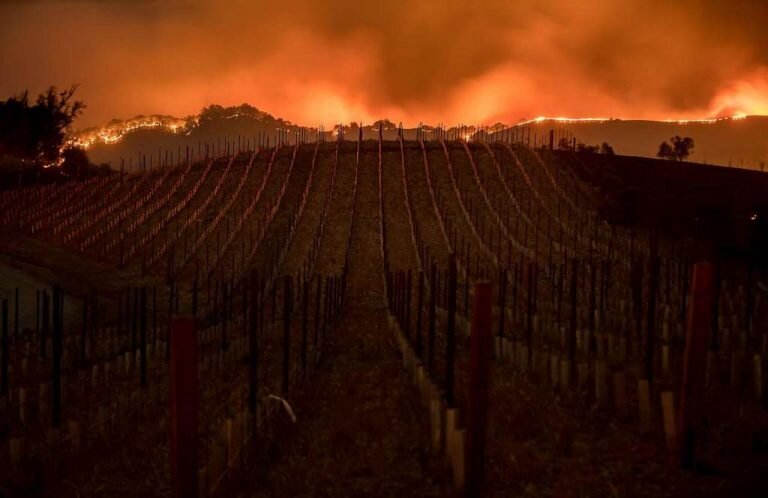
US West Coast wineries are suffering with devastating fires (photo by the US Army)
Dear reader,
We’re guessing you have seen especially in the last few months how wildfires – such as in the case of the US West Coast fire season – have threatened vineyards and even the lives of passionate winemakers.
As in the case of Napa Valley, dry weather, strong winds and embers can be an extremely dangerous scenario for anyone. When it comes to wine growing and winemaking, even if vines are usually less prone to burning down than forests, it also means another big problem for the following months: smoke taint, something that can pose a huge risk to a whole vintage.
Let’s have a look at wildfires affect vineyards and how winemakers have been coping with this despairing situation and its consequences.

Photo by Jackson Family Wines
Why are some wine regions so prone to wildfires?
Many of the most famous wine regions are dry, which helps growing grapes with more concentrated flavors – thus, making more complex wines. These regions usually get rainfall only over autumn and winter. Think California, the Iberian Peninsula and many others.
When it’s Summer, instead, the dry weather feeds into higher temperatures, thus facilitating conditions for sparks and unpredictable embers.
Dry vegetation and warm winds worsen it even more for places that are suffering with longer droughts and extreme conditions associated with climate change. California, again, being an easy-to-recall example.
Thankfully, vineyards often work as natural firebreaks, as Wine Spectator points out. The spacing or the vines, the limited combustion they provide in comparison with trees and the vines’ deep, green roots tend to protect them from most of the fires that surround them – sadly, not when an inferno happens.
As we have seen in the recent Napa, Sonoma and Oregon fires, flames, ashes and smoke created surreal, saddening images. Blazing conditions have been destructive in several Californian regions, with heartbreaking images being spread worldwide of burned down houses, scorched vineyards and grapes that never could be harvested mid-season.
